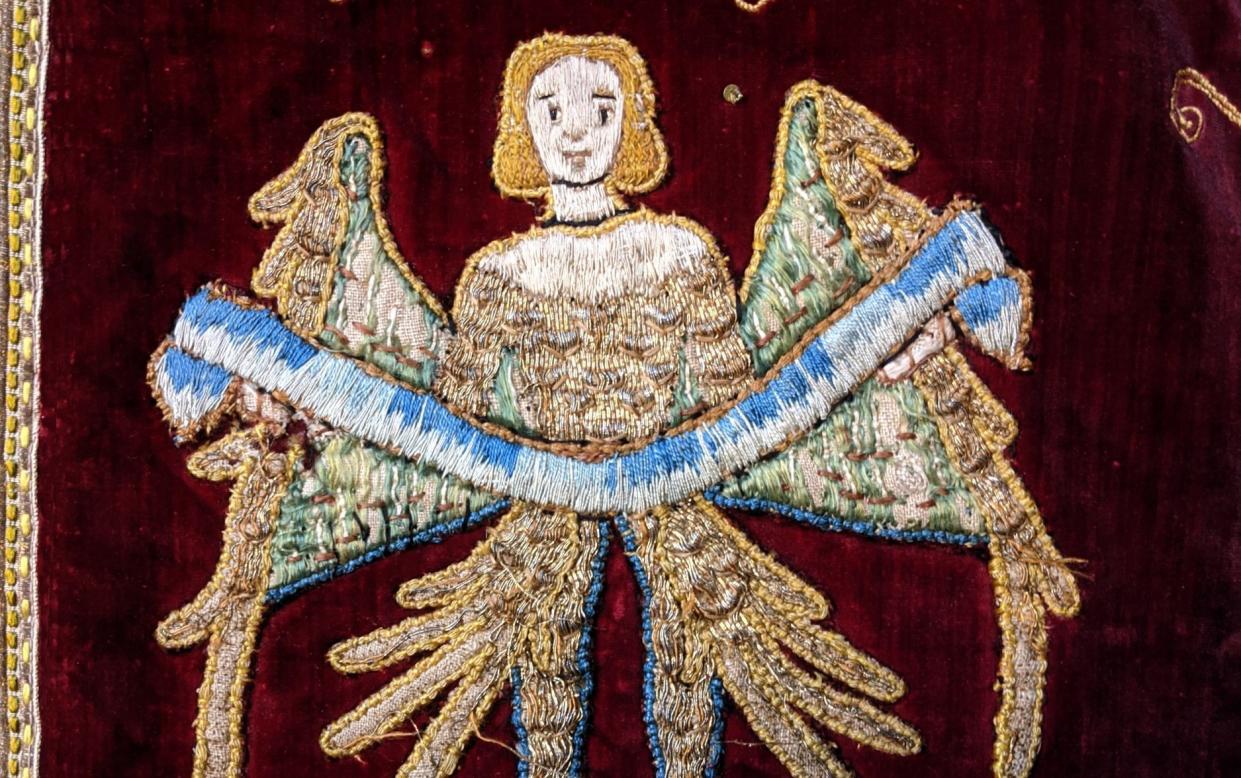Sacred Mysteries: Flowers of gold thread and beads of coral

Father Andrew Walker let me follow him up the steps hidden by the high altar of St Mary’s, Bourne Street. There he opened a wooden hatch below the life-sized crucifix on the east wall. A hand crank inside the hatch lowered a sort of blind before the crucifix and allowed the raising of a decorated wooden throne structure upon which a monstrance can be mounted for solemn benediction.
I’m a sucker for such old machinery. I’ve written here about the baroque equipment that lowers children playing angels from the dome inside the church at Elche, near Alicante, and returns the Virgin Mary through the air during the annual Mystery Play put on since the 15th century.
Fr Walker is the parish priest of an Anglican church “looking for the reunion of the Church of England with the Roman Catholic Church and influenced by her in music, liturgy and aesthetics”. There are few Roman Catholic churches, at least in England, with such profuse polychrome statuary in a small compass.
Anyway the hundred or two little wooden chairs will be cleared from the nave and south aisle to make way for a display of flowers and liturgical vestments from May 21 to 25. That coincides with the Chelsea Flower Show and an event called Belgravia in Bloom. It also marks the 150 anniversary of St Mary’s consecration. Peter Jones, the department store in Sloane Square, is lending mannikins for the vestments – not live ones.
There is nothing feminine in my eyes about a chasuble (the coloured poncho or tabard that a priest wears to say Mass). Historically it derives from the outer coat worn in Roman antiquity. No one then wore trousers, apart from barbarians.
St Mary’s has some stunning chasubles. One, made in 1490, has a thickly embroidered crucifix on the back, with other figures on the orphreys – the richly worked textile panels that here form the pattern of a cross. On the red velvet ground are embroidered angels and vegetal forms. England was the most admired place in the Middle Ages for embroidery, called Opus Anglicanum.
I was also taken by a chasuble decorated centuries ago with patterns made from tiny beads of coral. The historic origins of flowers and fronds on liturgical vestments go back to the earliest times. As a foundation textile, some vestments used brocade woven in large patterns. In that they followed the imperial habits of late antique Byzantium.
But my attitude to vestments as masculine clothes of ancient pattern took a bit of a knock from a number of chasubles in St Mary’s collection with the word “ballgown” in their name. Huge skirts had gone out of fashion in the late 1870s, but material from them was often very colourful, with bold floral patterns. So some were turned into priestly vestments. One set at St Mary’s is of a purple jacquard-woven textile from about 1880 and another with pink blooms amid foliage.
A set of vestments generally means a chasuble with similar vestments for the deacon (a dalmatic) and for the subdeacon (a tunicle). The clergy wear a matching stole (a narrow stiff scarf), and formerly a maniple, a short band looped over the forearm. A set of vestments also has a veil for the chalice and a burse, carried on the chalice, to house a plain linen corporal that is spread on the altar for the rites of the Eucharist. St Mary’s vestments, even the most precious, are in use at least once a year.
By reference to the Eucharist, the central holy rite of Christianity, vestments acquire their sacred character. If you haven’t seen these highly worked objects close-up, St Mary’s gives an ideal chance.


